#megacar
Text
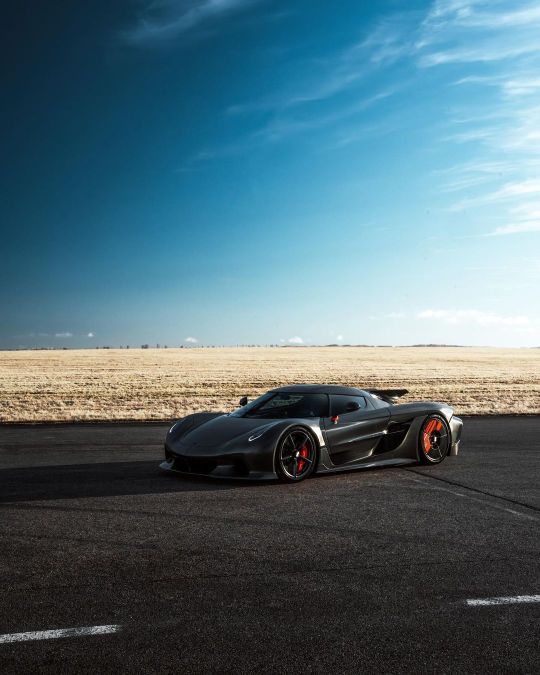



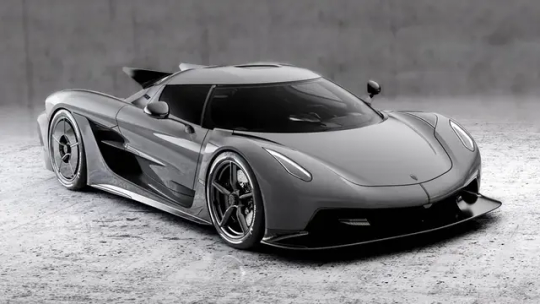
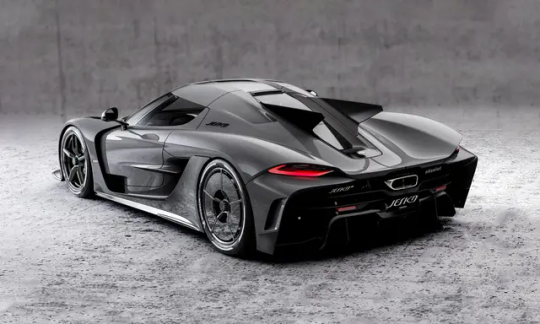

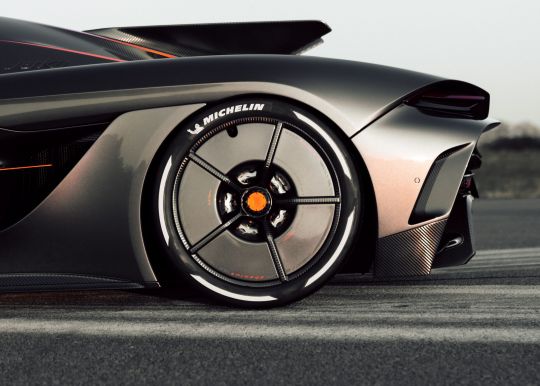

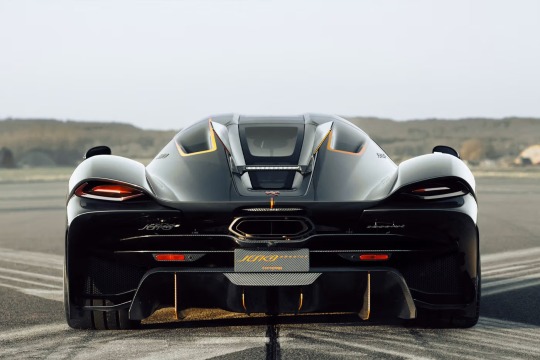
Koenigsegg Jesko Absolut Pre-Productionjesko
#art#design#supercars#supercar#sportcars#luxurycars#luxurycar#megacars#megacar#koenigsegg#absolut#jesko#koenigsegg jesko absolut#billionairelife#billionaire#luxury lifestyle
175 notes
·
View notes
Text

#koenigsegg#jesko#megacar#supercar#hypercar#koenigseggjesko#supercars#fastestcar#mostfastestcar#cars#car#fast car#luxury#fast cars#luxurycars
32 notes
·
View notes
Photo
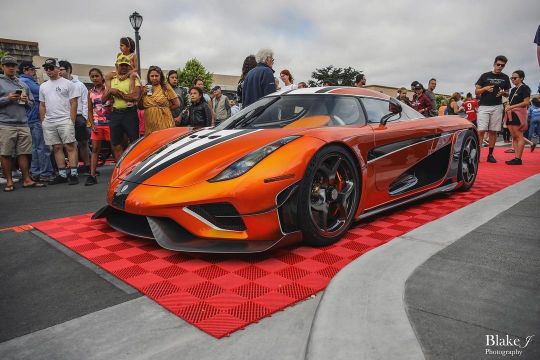
A festive specification for the season of scares! Koenigsegg Regera at EOB 2019 @koenigseggautomotive @exoticsonbroadway @atiquester ______________________________________ #carweekforever #carweek2019 #carweek #monterey #california #exoticsonbroadway #eob2019 #koenigsegg #regera #kejsare #megacar #halloween #blakejphoto (at Seaside, California) https://www.instagram.com/p/CkXZbcEufRh/?igshid=NGJjMDIxMWI=
#carweekforever#carweek2019#carweek#monterey#california#exoticsonbroadway#eob2019#koenigsegg#regera#kejsare#megacar#halloween#blakejphoto
5 notes
·
View notes
Photo

Amazing Mclaren p1❤️ Follow @supercar_lovers_club for more💖 -------------------------------------------------------- Credit 📸: @kenozache #mclaren #p1 #mclarenp1 #ultimateseries #mclarenultimateseries #mso #mclarenmso #mclarenspecialoperations #matteblackauto #matteblack #batmobile #esserautomotive #rallyegermania #koenigseggaachen #koenigseggduesseldorf #Megacar #hypercar #megacars #hypercars #koenigseggautomotive #esser #supercar #supercars #koenigseggesser #rimacgermany #koenigsegggermany #pace (at Europe) https://www.instagram.com/p/CeYk_EuJI1c/?igshid=NGJjMDIxMWI=
#mclaren#p1#mclarenp1#ultimateseries#mclarenultimateseries#mso#mclarenmso#mclarenspecialoperations#matteblackauto#matteblack#batmobile#esserautomotive#rallyegermania#koenigseggaachen#koenigseggduesseldorf#megacar#hypercar#megacars#hypercars#koenigseggautomotive#esser#supercar#supercars#koenigseggesser#rimacgermany#koenigsegggermany#pace
3 notes
·
View notes
Text
youtube
#koenigseggcc850#christianvonkoenigsegg#worldpremiere#koenigseggcc850transmission#MigzTV#MigzMusic#Migz#pebblebeachconcoursdelegance#pebblebeachconcoursdelegance2022#koenigseggcc850worldpremiere#Koenigseggworld#koenigseggworldpremiere#20yearanniversary#ChristopherMigliozzi#Hypercar#Megacar#supercar#exoticcar#ESS#LST#EngageShiftSystem#lightspeedtransmission#Youtube
0 notes
Photo

How Communities Can Fight Back Against Ever-Larger Cars and Trucks
What can cities do to stem the megacar crisis while the feds drag their feet? The post How Communities Can Fight Back Against Ever-Larger Cars and Trucks appeared first on Streetsblog USA.
https://usa.streetsblog.org/2023/08/09/how-communities-can-fight-back-against-ever-larger-cars-and-trucks
0 notes
Text
Koenigsegg: Gemera
2020 baharında dünya etkileyici Koenigsegg Gemera konseptinin tanıtımına şahit oldu. Şimdi, Koenigsegg, Gemera'yı ve doğum yeri olan Gripen Atölyesi'ni, İsveç'in Ängelholm şehrindeki Koenigsegg Kampüsü'nde açıklıyor.
2020 baharında dünya etkileyici Koenigsegg Gemera konseptinin tanıtımına şahit oldu. Şimdi, Koenigsegg, Gemera’yı ve doğum yeri olan Gripen Atölyesi’ni, İsveç’in Ängelholm şehrindeki Koenigsegg Kampüsü’nde açıklıyor.
Gripen Atölyesi, Gemera serisi ve gelecekteki modellere adanmış 11.000 m2’lik bir geliştirme, tasarım, üretim, ofis ve sergi alanından oluşur ve Koenigsegg tesislerinin toplam…

View On WordPress
0 notes
Text
8 notes
·
View notes
Text
The lable of "megacar" is kind of that same aspect.. you don't want to fit in or be in the same category as everyone else and you have succeeded in that, I'd say the Regera really plants it's foot in that category better than any other car we have seen but the definition of megacar being "different" makes people hate on it
So maybe megacar is "hybrid and alternative fuel vehicle over 1200hp from the factory"
0 notes
Text

Discover our state-of-the-art ICU facilities at Grace Megacare Hospital! Our advanced care ensures round-the-clock monitoring and specialized treatment for critical patients. 🏥 For more information, reach out to us:
📧 Email: [email protected]
📞 Phone: +91-93173 10023, +91-89891 00019
📍 Address: Green Avenue Estate, Jalgran Tabba, Una (H.P)
0 notes
Text
0-60 mph measures how quickly a vehicle can accelerate from a standstill to 60 miles per hour. This key performance benchmark highlights the raw speed capabilities of today's fastest production cars. Advancements in technology now enable many models to hit 60 mph in under 3 seconds or reach speeds exceeding 200 mph.
What Does the 0-60 MPH Metric Measure?
The 0-60 mph acceleration evaluation has long served as a standard for comparing maximum speed potential across vehicles. The test measures elapsed time reaching 60 mph from a complete stop. Shorter times signal quicker real-world acceleration.
0-60 provides an easily understandable metric of how fast a car can attain highway speeds. Other common acceleration measurements include:
0-100 mph - Time to reach 100 mph
Quarter-mile - Speed exiting a quarter-mile drag run
Top speed - Maximum velocity attainable
But 0-60 remains the most universal yardstick for quantifying rapid acceleration capabilities. Exotic sports cars aim to best 2-3 seconds, while typical family cars require 6-8 seconds reaching 60 mph.
The Fastest Production Cars by 0-60 MPH Time
Recent supercars have smashed acceleration records that long seemed unbeatable. Electric technology combined with ultra-powerful drivetrains enables new models to rocket to 60 mph in under 2 seconds - previously the sole domain of seven-figure megacars.
Here are the quickest production cars ranked by verified 0-60 mph times:
1. Rimac Nevera - 1.85 Seconds
Rimac Nevera - 1.85 Seconds
This all-electric hypercar from Croatian maker Rimac achieves insane acceleration via four separate motors producing 1,914 horsepower. The instantaneous torque catapults the Nevera from 0-60 in just 1.85 seconds.
2. Aspark Owl - 1.9 Seconds
Aspark Owl - 1.9 Seconds
Another electric hypercar, the Japanese-built Aspark Owl churns out over 2,000 horsepower to crack 60 mph in 1.9 seconds despite weighing over 2 tons. The $3.2 million price limits production to just 50 cars.
3. Tesla Model S Plaid - 1.99 Seconds
Tesla Model S Plaid - 1.99 Seconds
No surprise Tesla holds the fastest production electric sedan crown. Updated Plaid models produce 1,020 horsepower enabling 60 mph in a stunning 1.99 seconds thanks to uninterrupted electric torque.
4. Pininfarina Battista - 2.0 Seconds
Pininfarina Battista - 2.0 Seconds
This 1,900 horsepower Italian electric car ties the Model S Plaid by hitting 60 exactly 2 seconds. Automobili Pininfarina aimed explicitly to match top Tesla performance with Battista’s tuning.
5. Bugatti Chiron Super Sport - 2.3 Seconds
Bugatti Chiron Super Sport - 2.3 Seconds
The quad-turbo 8.0L W16 engine in this $3.9 million Bugatti hypercar churns out 1,600 horsepower. Despite immense power, added weight from luxury amenities lengthens the Chiron's 0-60 time slightly versus pure performance models.
Notable Sub-2 Second Production Cars
Dodge Challenger SRT Demon - 2.3 seconds
Porsche 918 Spyder - 2.5 seconds
Bugatti Veyron Super Sport - 2.5 seconds
Only a handful of road cars built this century manage to accelerate from 0-60 mph in less than 2.5 seconds. The exclusive club requires immense power-to-weight ratios.
Cutting-Edge Technology Driving 0-60 Records
Raw acceleration depends on optimal power delivery and traction. New technologies enable builders to extract maximum performance from elite supercars:
Powerful High-Output Engines and Motors
Naturally aspirated and twin-turbocharged 6+ liter V8/V10/V12 gas engines producing 1,000+ horsepower
High-RPM capabilities extending to 9,000+ RPM
High-power electric motors with instantaneous torque delivery
Massive yet efficient powerplants generate the abundant thrust necessary for extreme acceleration. Combined hybrid systems add torque-filling electric assist.
Advanced All-Wheel Drive Systems
Multi-clutch AWD rapidly varies torque distribution
Rear-wheel steering enhances high-speed stability
Electronic limited slip differentials optimize side/side power delivery
All-wheel drive with active torque vectoring supplies maximum grip when dispatching copious power to the pavement.
Effective Launch Control
Pre-configures systems for perfect departures
Maintains engine at optimal RPM
Maximizes traction off the line
Launch control technology leverages all available grip when accelerating from a dig. This catalyzes blistering 0-60 sprints.
Elements That Enable Quick Acceleration
Along with advanced drivetrains, physics principles govern acceleration capabilities:
Lightweight Construction
Extensive use of carbon fiber and composite materials
Ultra-light chassis and body components
By slashing curb weight down to under 3,000 pounds, power-to-weight ratio dramatically improves allowing huge acceleration gains from a given output level.
All-Wheel Drive Traction
Instantly applies power to all four wheels
Maintains maximum grip when accelerating
Prevents spinning the tires excessively
Optimal traction lets engines transfer available power into kinetic energy when accelerating, helping convert horsepower into speed.
Aerodynamic Shaping
Aggressive diffusers, wings, and active body panels
Generate substantial downforce without excess drag
Aerodynamics push vehicles into the pavement to counter forces lifting the rear axle during hard acceleration. This preserves grip and stability.
Low Center of Gravity
Centralized mass placement and lightweight materials
Reduces weight transfer off the line
A low center of gravity resists body roll and weight transfer inherent during rapid acceleration. The chassis stays planted on all four wheels.
When combined with ample horsepower, these principles enable today’s quickest supercars to deliver physics-defying speed runs.
History of Sub-2 Second Cars
Hitting 60 mph in less than 2 seconds was once considered unattainable by production street vehicles:
1999 - Saleen S7 Twin Turbo - 2.3 Seconds
One of the first production cars to officially break 2.5 seconds. The turbocharged V8 supercar made 550 hp propelling the S7 to 60 in 2.3 seconds.
2007 - Bugatti Veyron 16.4 Super Sport - 2.5 Seconds
Bugatti shocked the world by finally cracking the elusive 2.5 barrier. The 1,200 hp Veyron could reach over 250 mph in addition to breaking acceleration records.
2018 - Tesla Model S Performance - 2.4 Seconds
Tesla's introduction of Ludicrous Mode dropped Model S times into the low 2s. Fully electric torque delivery enables incredible launches despite no gear transmission.
2021 - Rimac Nevera - 1.85 Seconds
The advanced Rimac Nevera claimed the overall production car record with 1.85 second 0-60 runs. Stunning innovation continues advancing EV acceleration capabilities.
Pushing below the 2-second threshold now seems achievable by several automakers via electric torque and extreme power. Expect this exclusive club to expand as battery-electric tech evolves.
Not Just Straight Line Speed: The Value of Balance
While 0-60 draws acclaim, truly elite supercars excel across a spectrum of performance metrics:
Quick lateral transitions and slalom handling
High lateral G forces on the skidpad
Hard braking and structural rigidity
Fast lap times around racetracks
The one-dimensional goal of straight line speed sacrifices too much all-around capability. The very best fast cars balance acceleration with world-class cornering, braking, feel, and driver engagement across diverse conditions.
Are Ludicrous Acceleration Times Practical for Real Driving?
In truth, for road usage, 0-60 times under 3 seconds provide limited practical value:
Requires perfect conditions to achieve (prepped surface, warm tires)
Few opportunities to consistently exceed legal speed limits
Hard launches damage components over time
Increased risk of losing control
However, the pursuit of bench-marking
figures like sub-2 second 0-60s pushes engineering capabilities to the absolute limit. This drives innovation that ultimately filters down to benefit mainstream vehicles.
So while eye-popping acceleration metrics might seem unnecessary in day-to-day conditions, the technical achievements behind them catalyze advancement across the automotive spectrum. Carmakers distill this expertise into tangible real-world improvements.
FAQs
What production car has the fastest 0-60 time?
The production car with the fastest 0-60 time can vary depending on the specific model and year. According to various sources, some of the fastest cars in terms of 0-60 times include the Bugatti Chiron Super Sport 300+, the Koenigsegg Jesko Absolut, and the Rimac Nevera.
What technology allows such fast acceleration?
Several factors contribute to fast acceleration in cars, including high-performance engines, advanced aerodynamics, lightweight materials, and advanced electronics. In recent years, electric vehicles have also become increasingly popular due to their high-torque motors and instant torque delivery, which can provide rapid acceleration.
Are these fast cars street legal?
Yes, the fast cars with quick 0-60 times mentioned in the search results are street legal.
How much does the fastest 0-60 car cost?
The cost of the fastest 0-60 car can vary depending on the specific model and brand. Prices can range from hundreds of thousands to millions of dollars.
Can regular drivers handle these quick cars?
Regular drivers can handle these quick cars, but it is important to exercise caution and follow traffic laws. High-performance vehicles require skill and experience to handle safely, so it is recommended to receive proper training and practice before driving such cars at high speeds.
#Wiack #Car #CarInsurance #CarRental #CarPrice #AutoLoans
0 notes
Text
0-60 mph measures how quickly a vehicle can accelerate from a standstill to 60 miles per hour. This key performance benchmark highlights the raw speed capabilities of today's fastest production cars. Advancements in technology now enable many models to hit 60 mph in under 3 seconds or reach speeds exceeding 200 mph.
What Does the 0-60 MPH Metric Measure?
The 0-60 mph acceleration evaluation has long served as a standard for comparing maximum speed potential across vehicles. The test measures elapsed time reaching 60 mph from a complete stop. Shorter times signal quicker real-world acceleration.
0-60 provides an easily understandable metric of how fast a car can attain highway speeds. Other common acceleration measurements include:
0-100 mph - Time to reach 100 mph
Quarter-mile - Speed exiting a quarter-mile drag run
Top speed - Maximum velocity attainable
But 0-60 remains the most universal yardstick for quantifying rapid acceleration capabilities. Exotic sports cars aim to best 2-3 seconds, while typical family cars require 6-8 seconds reaching 60 mph.
The Fastest Production Cars by 0-60 MPH Time
Recent supercars have smashed acceleration records that long seemed unbeatable. Electric technology combined with ultra-powerful drivetrains enables new models to rocket to 60 mph in under 2 seconds - previously the sole domain of seven-figure megacars.
Here are the quickest production cars ranked by verified 0-60 mph times:
1. Rimac Nevera - 1.85 Seconds
Rimac Nevera - 1.85 Seconds
This all-electric hypercar from Croatian maker Rimac achieves insane acceleration via four separate motors producing 1,914 horsepower. The instantaneous torque catapults the Nevera from 0-60 in just 1.85 seconds.
2. Aspark Owl - 1.9 Seconds
Aspark Owl - 1.9 Seconds
Another electric hypercar, the Japanese-built Aspark Owl churns out over 2,000 horsepower to crack 60 mph in 1.9 seconds despite weighing over 2 tons. The $3.2 million price limits production to just 50 cars.
3. Tesla Model S Plaid - 1.99 Seconds
Tesla Model S Plaid - 1.99 Seconds
No surprise Tesla holds the fastest production electric sedan crown. Updated Plaid models produce 1,020 horsepower enabling 60 mph in a stunning 1.99 seconds thanks to uninterrupted electric torque.
4. Pininfarina Battista - 2.0 Seconds
Pininfarina Battista - 2.0 Seconds
This 1,900 horsepower Italian electric car ties the Model S Plaid by hitting 60 exactly 2 seconds. Automobili Pininfarina aimed explicitly to match top Tesla performance with Battista’s tuning.
5. Bugatti Chiron Super Sport - 2.3 Seconds
Bugatti Chiron Super Sport - 2.3 Seconds
The quad-turbo 8.0L W16 engine in this $3.9 million Bugatti hypercar churns out 1,600 horsepower. Despite immense power, added weight from luxury amenities lengthens the Chiron's 0-60 time slightly versus pure performance models.
Notable Sub-2 Second Production Cars
Dodge Challenger SRT Demon - 2.3 seconds
Porsche 918 Spyder - 2.5 seconds
Bugatti Veyron Super Sport - 2.5 seconds
Only a handful of road cars built this century manage to accelerate from 0-60 mph in less than 2.5 seconds. The exclusive club requires immense power-to-weight ratios.
Cutting-Edge Technology Driving 0-60 Records
Raw acceleration depends on optimal power delivery and traction. New technologies enable builders to extract maximum performance from elite supercars:
Powerful High-Output Engines and Motors
Naturally aspirated and twin-turbocharged 6+ liter V8/V10/V12 gas engines producing 1,000+ horsepower
High-RPM capabilities extending to 9,000+ RPM
High-power electric motors with instantaneous torque delivery
Massive yet efficient powerplants generate the abundant thrust necessary for extreme acceleration. Combined hybrid systems add torque-filling electric assist.
Advanced All-Wheel Drive Systems
Multi-clutch AWD rapidly varies torque distribution
Rear-wheel steering enhances high-speed stability
Electronic limited slip differentials optimize side/side power delivery
All-wheel drive with active torque vectoring supplies maximum grip when dispatching copious power to the pavement.
Effective Launch Control
Pre-configures systems for perfect departures
Maintains engine at optimal RPM
Maximizes traction off the line
Launch control technology leverages all available grip when accelerating from a dig. This catalyzes blistering 0-60 sprints.
Elements That Enable Quick Acceleration
Along with advanced drivetrains, physics principles govern acceleration capabilities:
Lightweight Construction
Extensive use of carbon fiber and composite materials
Ultra-light chassis and body components
By slashing curb weight down to under 3,000 pounds, power-to-weight ratio dramatically improves allowing huge acceleration gains from a given output level.
All-Wheel Drive Traction
Instantly applies power to all four wheels
Maintains maximum grip when accelerating
Prevents spinning the tires excessively
Optimal traction lets engines transfer available power into kinetic energy when accelerating, helping convert horsepower into speed.
Aerodynamic Shaping
Aggressive diffusers, wings, and active body panels
Generate substantial downforce without excess drag
Aerodynamics push vehicles into the pavement to counter forces lifting the rear axle during hard acceleration. This preserves grip and stability.
Low Center of Gravity
Centralized mass placement and lightweight materials
Reduces weight transfer off the line
A low center of gravity resists body roll and weight transfer inherent during rapid acceleration. The chassis stays planted on all four wheels.
When combined with ample horsepower, these principles enable today’s quickest supercars to deliver physics-defying speed runs.
History of Sub-2 Second Cars
Hitting 60 mph in less than 2 seconds was once considered unattainable by production street vehicles:
1999 - Saleen S7 Twin Turbo - 2.3 Seconds
One of the first production cars to officially break 2.5 seconds. The turbocharged V8 supercar made 550 hp propelling the S7 to 60 in 2.3 seconds.
2007 - Bugatti Veyron 16.4 Super Sport - 2.5 Seconds
Bugatti shocked the world by finally cracking the elusive 2.5 barrier. The 1,200 hp Veyron could reach over 250 mph in addition to breaking acceleration records.
2018 - Tesla Model S Performance - 2.4 Seconds
Tesla's introduction of Ludicrous Mode dropped Model S times into the low 2s. Fully electric torque delivery enables incredible launches despite no gear transmission.
2021 - Rimac Nevera - 1.85 Seconds
The advanced Rimac Nevera claimed the overall production car record with 1.85 second 0-60 runs. Stunning innovation continues advancing EV acceleration capabilities.
Pushing below the 2-second threshold now seems achievable by several automakers via electric torque and extreme power. Expect this exclusive club to expand as battery-electric tech evolves.
Not Just Straight Line Speed: The Value of Balance
While 0-60 draws acclaim, truly elite supercars excel across a spectrum of performance metrics:
Quick lateral transitions and slalom handling
High lateral G forces on the skidpad
Hard braking and structural rigidity
Fast lap times around racetracks
The one-dimensional goal of straight line speed sacrifices too much all-around capability. The very best fast cars balance acceleration with world-class cornering, braking, feel, and driver engagement across diverse conditions.
Are Ludicrous Acceleration Times Practical for Real Driving?
In truth, for road usage, 0-60 times under 3 seconds provide limited practical value:
Requires perfect conditions to achieve (prepped surface, warm tires)
Few opportunities to consistently exceed legal speed limits
Hard launches damage components over time
Increased risk of losing control
However, the pursuit of bench-marking
figures like sub-2 second 0-60s pushes engineering capabilities to the absolute limit. This drives innovation that ultimately filters down to benefit mainstream vehicles.
So while eye-popping acceleration metrics might seem unnecessary in day-to-day conditions, the technical achievements behind them catalyze advancement across the automotive spectrum. Carmakers distill this expertise into tangible real-world improvements.
FAQs
What production car has the fastest 0-60 time?
The production car with the fastest 0-60 time can vary depending on the specific model and year. According to various sources, some of the fastest cars in terms of 0-60 times include the Bugatti Chiron Super Sport 300+, the Koenigsegg Jesko Absolut, and the Rimac Nevera.
What technology allows such fast acceleration?
Several factors contribute to fast acceleration in cars, including high-performance engines, advanced aerodynamics, lightweight materials, and advanced electronics. In recent years, electric vehicles have also become increasingly popular due to their high-torque motors and instant torque delivery, which can provide rapid acceleration.
Are these fast cars street legal?
Yes, the fast cars with quick 0-60 times mentioned in the search results are street legal.
How much does the fastest 0-60 car cost?
The cost of the fastest 0-60 car can vary depending on the specific model and brand. Prices can range from hundreds of thousands to millions of dollars.
Can regular drivers handle these quick cars?
Regular drivers can handle these quick cars, but it is important to exercise caution and follow traffic laws. High-performance vehicles require skill and experience to handle safely, so it is recommended to receive proper training and practice before driving such cars at high speeds.
#Wiack #Car #CarInsurance #CarRental #CarPrice #AutoLoans
0 notes
Text
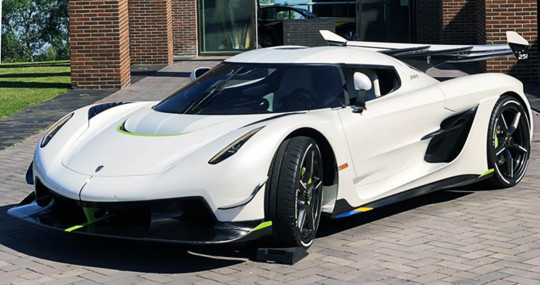
#koenigsegg#jesko#megacar#supercar#hypercar#koenigseggjesko#supercars#fastestcar#mostfastestcar#cars#car#fast car#luxury#fast cars#luxurycars
14 notes
·
View notes
Text
0 notes
Link
0 notes
Video
youtube
Koenigsegg Unveils Gemera: A Stunning Four-Seat Megacar with Choice of 3-Cylinder or V8 Powertrain.
0 notes